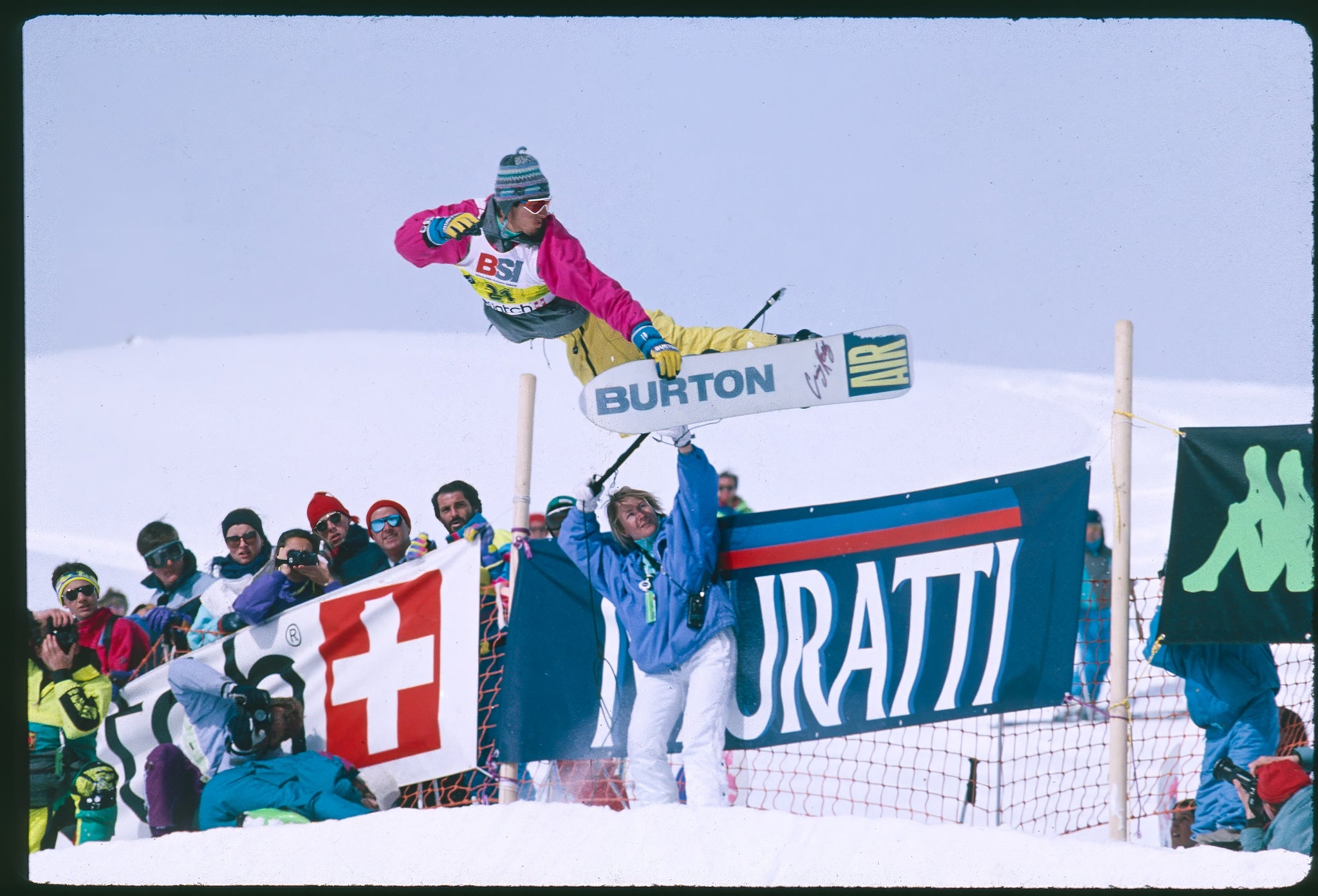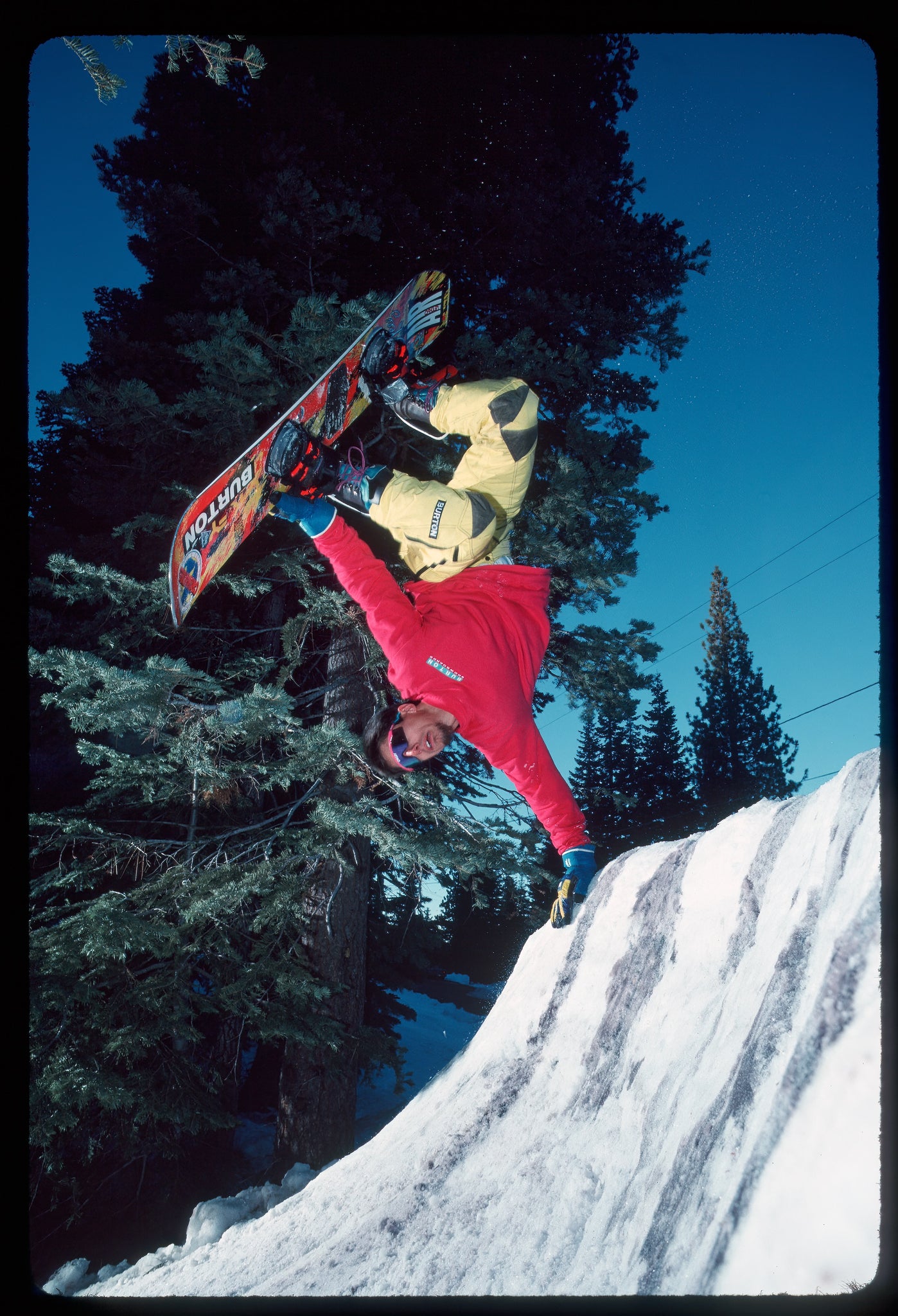Review by Nick Russell

I was 12 years old on January 20th, 2003. By this point in my life, the obsession was already so deeply rooted that I was well committed to a life of standing sideways. The true impact of that day wouldn’t make itself completely known for some years later, but there was an undeniable feeling of disbelief that overcame my perception of the snowboarding world that was a small corner of Southern Vermont. That year, I remember cutting out magazine pages from Snowboarder and Transworld to make a collage of Craig, Jeff Anderson and Tristan Picot, which I hung on my wall. Though I never had the chance to meet any of them personally nor was I old enough to have any real understanding of the risks involved in the mountains, their losses still cut deep into the soul of a young grom.
In 2006, Jacques Russo released the documentary, Let it Ride, which chronicles the life and times of Craig Kelly with an arsenal of tastefully curated archival footage and interviews with his closest friends. Narrated by Metallica’s James Hetfield, we the viewers got a first class seat to the heartfelt journey of the greatest and most influential rider to ever strap in. It’s the type of film that makes the hair on your body stand up in a tingle of awe inspiring motivation. Even today, this is likely the most fully comprehensive film on the history of snowboarding from its infancy up until that fateful day in the Selkirks in British Columbia. The impact Let it Ride has had on multiple generations (myself included) cannot be overstated.
It is human nature to dissect the intricacies of the greats. What makes them tick? Where do they find motivation and pull inspiration? We are fascinated by the lives of the ones that guide the way. For the case of snowboarding’s fallen leader, what the hell happened that day on the Durrand Glacier that killed Craig and six others? Twenty one years after his untimely death, the release of The Darkest White has been greatly anticipated and is finally welcomed into the world.

Written by New York Times bestselling author Eric Blehm, The Darkest White is an in-depth and sincere tribute to Craig Kelly. While I can’t say that I’ve ever read a memoir about a snowboarder before, it is reassuring to know that the grand undertaking of stepping up to the task was done by a highly qualified lifelong rider. A former editor of Transworld Snowboarding from 1992 to 1997, Eric’s credentials are second to none. For over five years he researched and compiled what is perhaps one of the most important contributions to snowboarding’s history and culture.
I asked Olivia, Craig’s daughter, who is now 22 years old and well immersed in the community, what the release of this book means to her. “I would say [it] shares so many stories from my dad’s earlier years that offer me a deeper understanding of his life before I was born, and even before snowboarding was relevant to him. Almost all of my knowledge of my dad is through stories, videos or photos. It is always special to be able to learn more about him, who he was as a person and the things he experienced.
So far what feels the most special to me is the reach this book has had on the snowboard community and beyond, purely by word of mouth… that shows his legacy continues and lives on!”

Diving deeper past the documented footage featured in Let it Ride, Blehm opens with a biography about a child navigating his early years in Mount Vernon, Washington. From the South 21st Street bike gang to a successful stint as a BMX rider, it was clear that grit and determination were part of his DNA. In January of 1981, a revolution was unknowingly sparked when Craig was hand selected by Jeff Fulton along with Dan Donnelly to drive up the Mount Baker highway to try snowboarding for their first time. While the learning curve was steep, by the third day the board now “felt like an extension of his body.” Jeff knew that once Craig latched onto snowboarding, all the other kids in the neighborhood would follow suit. Though at the time, I can’t imagine he’d have any idea of the heights they would reach. The impacts of the early Mount Baker Hardcore crew still resonate today and have played a pivotal role in freeride culture. Craig and Donnelly’s AK sunset heli session is what dreams are made of.
This book does a fantastic job at capturing the essence of a rising star in a developing sport. Stories of judging debacles to post contest antics and sponsorship drama are brought to life with quotes from a plethora of former riders and friends. After making the turbulent switch from Sims to Burton, The Darkest White follows the ascension of a fierce competitor realizing, proving and establishing his greatness. By the time he was in his late 20’s, Craig had won everything multiple times over and was the uncontested GOAT. Throughout this process, he paved the way for future pros to have a formula to follow and built a platform to be taken seriously as a professional athlete. As the book conveys, “wherever Craig went, snowboarding went.” He was a non-mortal that Blehm creatively describes as “a superhero born from a blizzard on a sleeping volcano.”
At what seemed to be the height of his career, Craig made the conscious decision to step away from competition and shift focus towards the mountains. While nowadays this is the storyline from every burnt out contest rider going to Alaska for their first time, it was completely uncharted territory in the 90’s. Thanks to the unwavering support of Jake and Donna Carpenter, this move would once again alter the sport for the better. Rather than riding to impress judges, receive accolades and maybe a nice paycheck, Craig had the foresight to realize that “snowboarding is something that should be done on your own terms as much as possible. Society is full of rules, and I use the time I spend in the mountains as an opportunity to free myself of all constraints.” According to the masses, Craig had gone “off the map,” and his legacy now further evolved into lore. Thanks to the myriad of interviews and documentation recorded of Craig, Blehm is able to paint a humanizing transformation towards enlightenment.

In his quest to become a certified mountain guide in Canada, The Darkest White details the challenging process that Craig had to endure on his splitboard. Once again, this was virtually unheard of at the time and the governing ski guiding institutions made it as difficult as possible for him to reach his goal. Dave Downing says that after he lent him his splitboard for the first time in 1998, “he was addicted.” This would lead to his direct involvement in helping Burton develop their splitboard program. Like everything else, he was committed to this new side of snowboarding and Burton followed him. Having a recent discussion with Jeremy Jones about the book, he wonders “where splitboarding would be if we hadn’t lost Craig. I think it would have been a lot further along than it is now.”
The reader is introduced to John Buffery, legendary mountain guide, snow safety specialist and most importantly, Craig’s mentor. Buff shares insight into helping Craig train for his guiding exams and made sure he had the experience to meet the prerequisites. My favorite anecdote is from a multi-day splitboard tour in which Craig hid Buff’s skins from him at the bottom of the mountain, making him believe he forgot them on the summit. Turns out it was April Fool’s day, which also happens to be Craig’s birthday. Just as he was determined to win contests, Blehm shares how he took that same drive and applied it towards becoming a guide. “The more I learn… the more I’m able to do. It’s kind of a nice circular feeding frenzy.”
Like inching closer and closer to the edge of a blind convex roll, your heart begins to beat faster and faster as the book progresses into the events leading up to the avalanche on the Durrand Glacier. Blehm diligently describes the weather and conditions leading up to the accident, going through years of records to accurately paint a picture of what the snowpack was like in the Selkirks at the start of the 02/03 season. Featuring accounts from fellow clients and guides at the Selkirk Mountain Experience, a backcountry touring lodge outside of Revelstoke, The Darkest White presents an unbiased big picture view of the days leading up to and through the chaos and horror when 12 people were caught in that massive avalanche.
What took people so off guard about this tragic accident was the fact that Craig was very conservative in the mountains. How could this happen to someone so cautious? Why were there so many people on the slope at the same time? One of the most basic rules in backcountry travel is to minimize exposure to avalanche terrain, this means crossing suspect slopes one at a time if possible. Not to mention the fact that this incident took place at a guided operation. The two at the center of controversy were SME owner and lead guide, Rudi Beglinger and tail guide Ken Wylie. Ken has told his side of the story in his own book titled, Buried, but it was clearly one-sided and didn’t provide the closure that many were seeking. The people needed to hear the real truth from Rudi. While he always maintained innocence and never took any accountability, many people were far from satisfied with his response. Eric Blehm’s journalistic talents shine through as he gets Rudi to open up more than ever publicly recorded. Looking as objectively as possible, this book shows a scene of an unhealthy guiding environment and miscommunication but most importantly, the undeniable fact that the mountains are an inherently dangerous place. As Craig was aware of and predicted, spatial variability within a snowpack would be the most challenging aspect of this next stage in his development. It was a failed persistent weak layer on a rain crust that formed on November 20th, 2002 that tragically took his life along with six others.
There is an entire generation of snowboarders right now that were born after January 20, 2003. These are the ones that will carry on this holy grail that is the pursuit of riding down mountains after we are gone. According to Olivia, today’s younger riders “are not necessarily growing up with an understanding of the history of snowboarding, with some expectations obviously. This book coming out feels like such an amazing opportunity to share some of the early years of the sport with those who may not know anything about it.”
Coming up in a time that was predominantly focused on freestyle resort riding, learning more about Craig was a necessary step in my personal evolution as a snowboarder and as a human. His full immersion into the backcountry would have ripple effects throughout the industry still felt today. This ultimately made it possible for riders such as myself to have a path that isn't based on number of rotations, but on an artistic vision of moving through the mountains. Craig’s exit from the public eye and entrance into nature set the bar for us all.
Thank you Eric Blehm for sharing your years of research and hard work with us. Just like Craig’s legacy, The Darkest White is sure to stand the test of time. 10/10.
You can buy The Darkest White in our store now. Click here



















